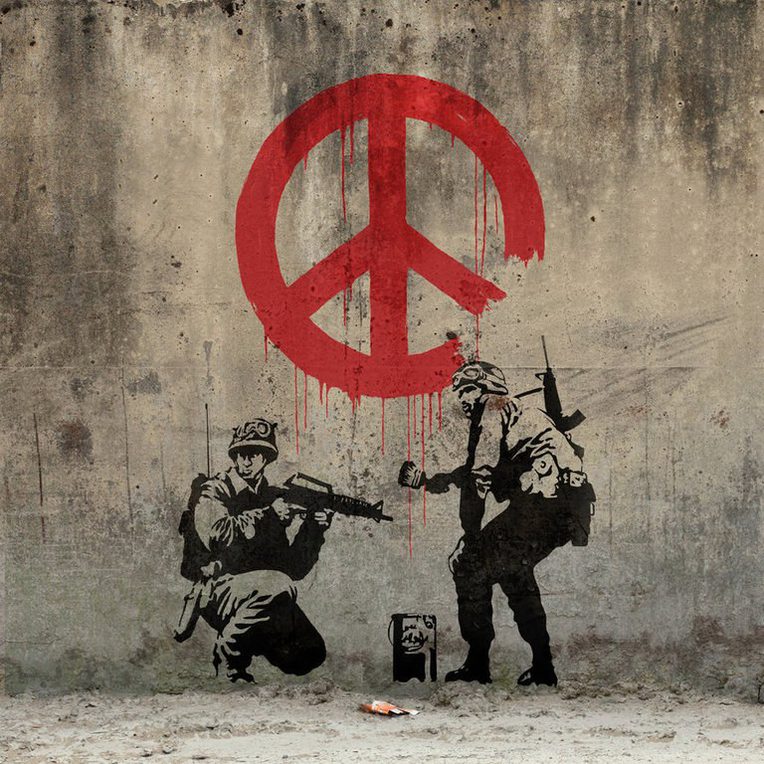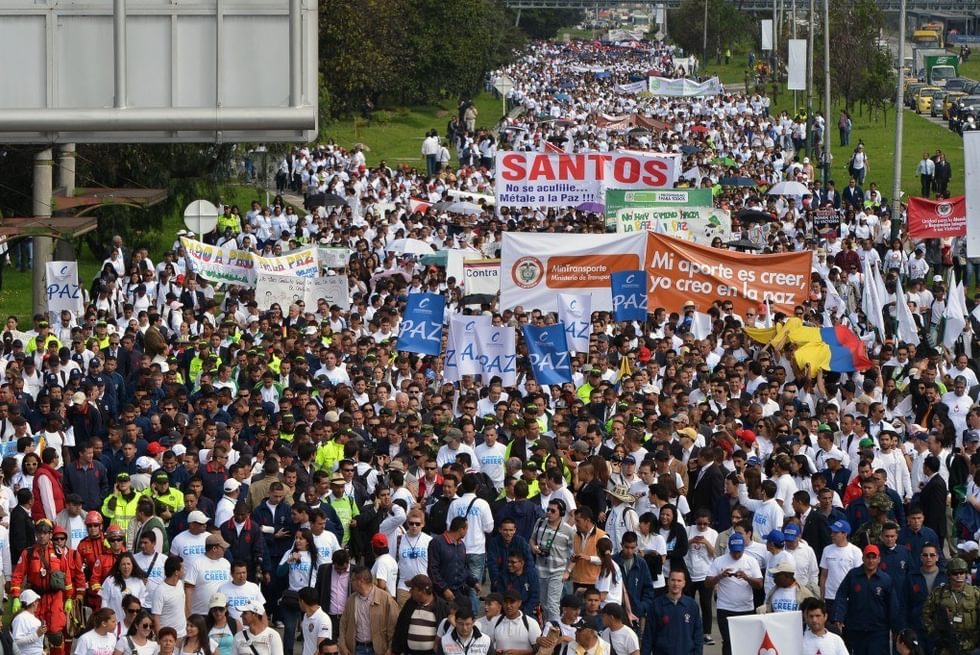With negotiations between the Colombian government and the Revolutionary Armed Forces of Colombia (Fuerzas Armadas Revolucionarias de Colombia, FARC) in an advanced stage, the longest ongoing civil war in the Western Hemisphere may be coming to an end. But what does peace mean to a country that has experienced armed conflict for over fifty years? The war that formally began in 1964 with the birth of the FARC has gone through many transformations: from the height of the Cold War in the 1960s, to the emergence and deepening of narcotraffic in the 1970s and 1980s, to the paramilitarism of the 1990s, and to the extractive economies of today.
The essays in this series aim to pull apart the threads that run through the conflict’s many mutations. These threads have been knotted together for decades and, as the essays warn, will not be untied so easily in the post-conflict period now on the horizon. This series brings together case studies from radically different field sites spread throughout Colombia, yet they are united by a shared concern with an assemblage of structural factors. The result is a group of essays that resonate deeply with each other, which we have grouped into six themes. At the same time, the essays echo across these themes in rich and unlikely ways that defy our best efforts to curate this collection through the following schema.
In an introductory essay, the series editors lay out the state of the peace negotiations (as of February 2015), and their stakes. Essays by Myriam Jimeno, María Clemencia Ramírez, and Juan Felipe Hoyos García look to social movements mobilizing in a period of limbo. Inge Valencia and Kristina Lyons each provide insightful analysis into the pitfalls of a post-conflict scenario amid a thriving drug trade. Austin Zeiderman and Federico Pérez turn their attention to cities, an often-neglected geographic dimension of the Colombian conflict. Then comes the biggest chicharrón (a difficult to chew pork rind) of all: land. Meghan Morris and Winifred Tate each bring rich ethnographic insights into how communities experience the inequality of land distribution. This issue crosses into the analysis of Diana Bocarejo, James Robinson, and Erin Mcfee, who each rethink peace policy from the periphery. Finally, Emily Cohen, María Vidart-Delgado, and Alex Fattal critically parse the representational dimensions of the war.

In an attempt to leverage the Cultural Anthropology website as a platform for exchange and debate, we have included essays from scholars living and working in Colombia, in Spanish, and the authors have had the opportunity offer translations of their essay. The subject matter befits the opening of the Cultural Anthropology website to non-English essays. The prospect of peace in Colombia is wrapped up in a larger story about a hemispheric shift away from the blunter instruments of political conflict, such as guerrilla warfare and blockades. It is more than a mere coincidence that the FARC announced an indefinite unilateral cease-fire on the same day that the United States and Cuba declared their rapprochement. As the legacy of the Cold War fades, spaces of cross-regional academic exchange can enrich debates too often fragmented by national academic cultures. The stakes for such a dialogue could not be higher as policy makers throughout the Americas rethink long-held assumptions about drug prohibition, militarization, and security; issues deeply interlaced with the possibility of peace in Colombia.
In an attempt to leverage the Cultural Anthropology website as a platform for exchange and debate, we have included essays from scholars living and working in Colombia, in Spanish, and the authors have had the opportunity offer translations of their essay. The subject matter befits the opening of the Cultural Anthropology website to non-English essays. The prospect of peace in Colombia is wrapped up in a larger story about a hemispheric shift away from the blunter instruments of political conflict, such as guerrilla warfare and blockades. It is more than a mere coincidence that the FARC announced an indefinite unilateral cease-fire on the same day that the United States and Cuba declared their rapprochement. As the legacy of the Cold War fades, spaces of cross-regional academic exchange can enrich debates too often fragmented by national academic cultures. The stakes for such a dialogue could not be higher as policy makers throughout the Americas rethink long-held assumptions about drug prohibition, militarization, and security; issues deeply interlaced with the possibility of peace in Colombia.
Posts in This Series

Introduction: The Colombian Peace Process: A Possibility in Spite of Itself
On November 16, 2014 General Alzate, who commanded the “Titan” Joint Forces Command that operates in Colombia’s Pacific Northwest, became the first general to f... More

“Si nos mataron callados ahora que nos maten hablando”: El Poder del Testimonio en el Posconflicto
“Si nos mataron callados ahora que nos maten hablando,” exclamó ante la televisión colombiana Lisinia cuando se enteró de que un jefe “paramilitar” la había señ... More

Peace Negotiations and Social Protest
The Revolutionary Armed Forces of Colombia (FARC) have had a strong presence in southwest Colombia during the ongoing peace negotiations. They have continued to... More

De lo Diverso a lo Emblemático: Conflictos Transicionales en torno a la Memoria y la Reparación de Grupos Étnicos
La dura lucha de los indígenas awá por ser reconocidos como víctimas colectivas del conflicto armado ha logrado abrir un estrecho sendero entre la maraña del mu... More

Can There Be Peace With Poison?
During the 2013–2014 National Popular, Agrarian, and Ethnic Strike, small farmers and miners, students and educators, transportation and healthcare workers, and... More

Narcotráfico y Posconflicto en Colombia
Durante los últimos veinte años, el narcotráfico ha sido una de las prioridades de las políticas de seguridad de Estados Unidos y varios países latinoamericanos... More

Post-Conflict Violence in Colombia’s Next Port City
The ongoing peace talks between the Colombian government and Revolutionary Armed Forces of Colombial (FARC) guerrillas give hope that a “post-conflict” future i... More

Post-Conflict Urbanism and The Logics of Warfare In Colombia
During the ongoing peace negotiations between the Colombian government and the Revolutionary Armed Forces of Colombia (FARC), the urban areas have been perhaps ... More

Property in the Shadow of the “Post-Conflict”
“And this is how they want to make peace,” Angela said, motioning toward the riot police standing outside Medellín’s city council building. A couple of hundred ... More

An Ordinary Peace in a Disparate Landscape of Longings
While arranging tents for tourists in Tayrona Park, Javier recalls how commotion was growing around the announcement of the construction of a seven-star hotel o... More

Land and the Violence to Come in Colombia
The landscape of the Caribbean coast has been transformed over the past twenty years, as vast stretches of African oil palm and other monocrops stand in neat ro... More

Peace in Colombia? A View from San Andrés de Cuerquia
The Colombian government has been fighting against the Fuerzas Armadas Revolucianarias de Colombia (FARC) for fifty years and has been negotiating peace with th... More

Commissioning “Truth” in Transition in Florencia, Caquetá
Current debates on a possible truth commission in Colombia focus on the classification of victims, state accountability/impunity, and changing the “Colombian me... More

Scenes from Colombian Minefields
Colombia is one of the most landmine-affected countries in the world. This is one of the legacies of a multisided war in which the military, paramilitary groups... More

The Tactics of Political Campaigning as an Obstacle to Peace
Politicians spin the meanings of war and peace during elections to galvanize voters. In the context of the peace process, electoral tactics that play with publi... More

#WARONPEACE, @AlvaroUribeVel: The Barking Tweets of Paramilitary Populism
Former Colombian President Álvaro Uribe Vélez has 3.5 million followers on Twitter (as of January 2015). To put this impressive quantity in perspective, that is... More
